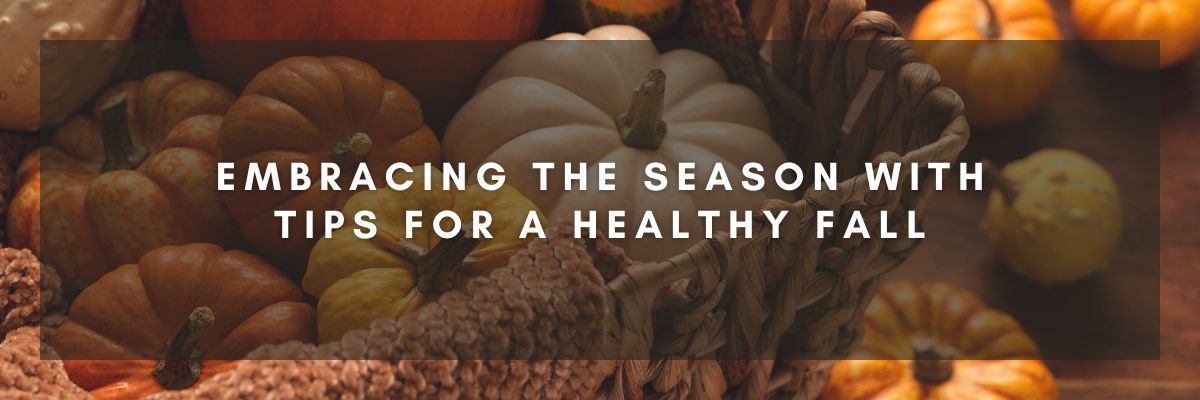Follow Us!
Two Locations To Serve You
- Acupuncture of Morris County45 Pine Street
Suite 7
Rockaway, NJ 07866973-453-6400 is under repair
Please call 201-690-6696 to contact our new office. - Sign up to receive news and updates and get my free report:“The Top 10 Reasons to Try Acupuncture”

- Testimonials
I have suffered from seasonal allergies for almost 20 years. Each year they would progressively get worse- causing severe congestion, sneezing, puffy eyes, headaches, and often a rash. This would continue throughout the spring allergy season, and no pill or home remedy I tried ever really provided relief.
I started seeing David for acupuncture to treat my migraine headaches, and since that had been so successful, I decided to try it for treating my allergy symptoms as well. I was
... Read more »After injuring my left shoulder, I had several months of physical therapy. I regained *almost* full usage of my shoulder and continued with physical therapy exercises on my own, but had to stop. Then the shoulder pain got much worse. I saw an orthopedic surgeon and was diagnosed with a frozen shoulder. Before trying a cortisone shot, I wanted to better understand the alternatives. I recalled how a friend had been helped by David and decided to give acupuncture a
... Read more »After years of suffering with severe pain in the neck, back and down my entire right arm, I was diagnosed with spinal stenosis and disc degeneration of my cervical spine. I had tried chiropractic, massage and had even undergone spinal injections to try to remedy the condition just to get some relief. Nothing had positive results. As an athlete and body builder, this constant nagging pain not only made being active very difficult, but day to day activities were also a
... Read more »I suffered with tinnitus and anxiety about it for a couple of years. I tried all the magic pills and sound machines (to mask the ringing) to no avail. My doctor told me nothing could be done and that I had to learn to live with it. When I got that bad news my anxiety levels went through the roof. The online forums on tinnitus didn’t help matters with their less than rosy outlook on the condition.
Then
... Read more »After playing a lot of golf in Florida this past winter, I suffered from “tennis elbow” of my left arm, which, unfortunately, has “cramped my style” and also has prevented me from playing golf this spring and summer. Apparently, “tennis elbow” isn’t just an overuse injury caused by playing tennis; it’s common to golfers, and it involves strained inflamed outer elbow tendons. Upon my return to NJ, basic arm movements such as being able to wring out a towel or
... Read more » Hours – Morris County
MonClosedTue10:00am-6:00pmWedClosedThu10:00am-6:00pmFriClosedSatClosedSunClosedBy appointment only. Please call our office if you need help scheduling.
Hours – Park Ridge
Mon10:00am-6:00pmTueClosedWed10:00am-6:00pmThuClosedFri10:00am-6:00pmSatClosedSunClosedBy appointment only. Please call our office if you need help scheduling.
-
Latest Articles:
- • The Best Ways to Protect Your Skin from the Sun This Summer •
- • Savoring Summer with Recipes Using the Best Summer Ingredients •
- • Top 5 Best Staycation Ideas for Summer •
-
Recent Posts
- Let Acupuncture Help You Get Better Sleep
- Finding the Calm in the Storm: How Acupuncture Can Help Treat Anxiety
- 4 Ways Acupuncture Supports Women’s Health
- How Acupuncture Combines with Adjunctive Therapies for Holistic Wellness
- Finding Balance: How Acupuncture Eases the Side Effects of Cancer Treatment
Health WellNews
5 Tips to Boost Your Spring Wellness Routine

The first warm breeze of spring carries with it a sense of renewal. After months of bundling up against the cold, you step outside and feel the sun kiss your skin. Birds chirp overhead, flowers begin to bloom, and suddenly, you’re inspired to shake off winter’s sluggishness. It’s the perfect time to revamp your wellness routine, embrace fresh habits, and prepare your body and mind for the vibrant season ahead. But where do you begin? Here are five of the best ways to boost your spring wellness routine and feel your absolute best.
Refresh Your Diet with Seasonal Foods
Winter often leads to heavier, comfort-based eating, but spring calls for a shift toward lighter, fresher meals. Take advantage of seasonal produce to nourish your body with essential vitamins and minerals.
Spring offers a bounty of greens like spinach, arugula, and kale, as well as vibrant fruits such as strawberries and citrus. These foods not only enhance digestion but also provide antioxidants that boost your immune system. Consider swapping out processed snacks for a crisp salad, a smoothie packed with fresh berries, or a simple avocado toast topped with radishes.
Try visiting your local farmer’s market to pick up fresh ingredients. The experience itself can be refreshing and inspiring — connecting with local farmers and learning about where your food comes from can deepen your appreciation for wholesome eating.
Get Moving Outdoors
If you’ve spent most of winter curled up on the couch, now is the time to get back outside. Exercise doesn’t have to mean an intense gym session; simply moving your body outdoors can have significant benefits for both physical and mental health.
Take a morning walk while listening to your favorite podcast, go for a bike ride, or try an outdoor yoga session. Even gardening is a great way to stay active while enjoying the beauty of nature. The extra dose of vitamin D from the sun will improve your mood and strengthen your immune system.
Spring is also a great time to try new activities — hiking, jogging in a nearby park, or even joining an outdoor fitness class can help refresh your workout routine and keep things interesting.
Prioritize Spring Cleaning — Inside and Out
Spring cleaning isn’t just about decluttering your home; it’s also an opportunity to refresh your mental space. Studies show that a clean and organized environment can reduce stress and improve focus. Take the time to deep clean your living space, open the windows for fresh air, and donate items you no longer need.
In addition to physical cleaning, consider a digital detox. Clear out old emails, unfollow social media accounts that don’t serve you, and set boundaries for screen time. Taking breaks from digital clutter allows you to be more present and engaged in the real world.
For an inner reset, try journaling, meditating, or practicing deep breathing exercises. A fresh start in your surroundings and mind can leave you feeling lighter and more energized.
Rejuvenate Your Skincare Routine
With the changing seasons, your skin’s needs shift as well. The heavy creams and moisturizers that got you through winter may feel too thick as temperatures rise. Spring is the time to switch to lighter, hydrating products that still protect your skin.
One key change? Sunscreen. As you spend more time outdoors, be diligent about applying SPF daily to protect your skin from UV rays. Consider exfoliating to slough off dry winter skin and revealing a fresh, glowing complexion.
Additionally, hydration plays a crucial role in skincare. Drinking plenty of water and eating water-rich foods like cucumbers and melons can keep your skin looking healthy and radiant.
Reset Your Sleep Routine
With longer daylight hours, it’s easy to push bedtime later than usual. However, maintaining a consistent sleep schedule is crucial for overall wellness. Quality sleep affects everything from mood and energy levels to immune function.
Try setting a relaxing nighttime routine — dim the lights, reduce screen exposure before bed, and engage in calming activities such as reading or sipping herbal tea. Consider waking up with the sun by letting natural light filter into your room in the morning, helping to regulate your body’s circadian rhythm.
Spring is also a great time to reassess your sleep environment. Lightweight bedding, fresh pillowcases, and even a lavender-scented diffuser can enhance your sleep quality.
As you step into spring, think of it as a chance to hit the reset button on your health and well-being. Just like the flowers pushing through the soil, you have the opportunity to bloom into your best self. By making small, intentional changes to your routine — eating fresh foods, moving outdoors, decluttering your space, caring for your skin, and prioritizing rest — you’ll feel revitalized and ready to embrace the season with energy and joy. So, take a deep breath, soak in the beauty of spring, and let these wellness habits guide you to a happier, healthier you.
Strategies to Stay Calm and Joyful During the Season

The holiday season is often portrayed as the most wonderful time of the year, filled with joy, family gatherings, gift-giving, and celebration. However, for many people, the holidays can also be a source of significant stress. From financial pressures to juggling family dynamics, the season can bring a wide range of challenges making it difficult to fully enjoy. If you find yourself feeling more overwhelmed than festive, you’re not alone. Fortunately, with some thoughtful planning and practical strategies, it’s possible to navigate holiday stress and focus on what truly matters.
Set Realistic Expectations
One of the biggest contributors to holiday stress is the pressure to live up to unrealistic expectations —whether from yourself or others. It’s easy to fall into the trap of trying to create a “perfect” holiday, but this can lead to burnout and disappointment.
Let go of perfectionism and accept that things may not go exactly as planned, and that’s okay. The holidays don’t have to be flawless to be meaningful. Instead of focusing on minor details, prioritize what matters most to you.
Remember that family members and friends may also be dealing with their own stresses. Try not to put pressure on others to act or behave in a certain way. Setting realistic expectations for holiday gatherings can help reduce conflicts and promote a more relaxed atmosphere.
Create a Budget and Stick to It
Financial stress is a major cause of anxiety during the holidays, especially with the pressure to buy gifts, attend events, and perhaps even travel. To avoid this, it’s essential to create a holiday budget that you can stick to.
Set a spending limit and decide in advance how much you can afford to spend on gifts, food, decorations, and other holiday-related expenses. Be realistic and consider your other financial responsibilities.
Get creative with your gifts. Expensive gifts aren’t the only way to show appreciation. Consider giving homemade presents, offering your time (such as babysitting or helping with tasks), or organizing a gift exchange with a set spending limit among family members to reduce the financial burden.
Track your spending and keep a close eye on your purchases to ensure you don’t go over your budget. It’s easy to overspend during the holidays, so regularly checking your finances can help keep you on track.
Prioritize Your Time
The holiday season is packed with activities, from shopping to parties and family gatherings. Without careful planning, it’s easy to feel overwhelmed and stretched thin. To maintain a sense of control, prioritizing your time is essential.
Make a to-do list and then rank the tasks by importance. This helps you visualize what needs to be done and prevents smaller tasks from slipping through the cracks. Learn to say no. While it can be difficult, setting boundaries is crucial to managing stress. Saying no, when necessary, allows you to prioritize your mental and physical well-being. With all the hustle and bustle of the season, it’s easy to neglect self-care. Make sure to carve out some “me time” each day, even if it’s just 15 minutes of quiet reflection, meditation, or doing something you enjoy.
Practice Mindfulness and Gratitude
The holidays can be a whirlwind, but practicing mindfulness and gratitude can help ground you in the present and reduce feelings of stress. Instead of worrying about what’s coming next or dwelling on what’s already happened, try to stay present. Writing down what you’re grateful for each day can shift your focus from the stressors of the holiday season to the positive aspects of your life. Gratitude has been shown to increase happiness and reduce feelings of anxiety. If you’re feeling overwhelmed, take a few minutes to practice deep breathing exercises. Slow, deep breaths can help calm your nervous system and relieve stress in the moment.
Manage Family Conflicts
Family gatherings are often a source of holiday stress. While being around loved ones can bring joy, it can also lead to conflicts, especially if there are unresolved issues or differing opinions. However, there are ways to manage these dynamics to ensure more peaceful interactions.
If certain conversations tend to lead to arguments (e.g., politics, money, or past family issues), it’s best to steer clear of them. Politely redirect conversations to more neutral topics if tensions start to rise. If a family member tends to behave in ways that stress you out, it’s important to set boundaries. Be clear about what behavior is acceptable and what is not. If a family gathering becomes overwhelming, don’t hesitate to step away for a moment. Whether you go for a short walk, retreat to a quiet room, or simply take a few deep breaths, giving yourself a break can help you reset and approach the situation with a calmer mindset.
Don’t Forget About Self-Care
The holidays are a busy time, but self-care should remain a priority. When stress levels rise, taking care of yourself becomes even more critical. Sleep is essential for both mental and physical health. Try to maintain a regular sleep schedule, even with holiday events, and aim for 7-9 hours of quality rest each night. Physical activity is a natural stress reliever. Even if your schedule is packed, find time for a short workout, walk, or yoga session. Exercise boosts endorphins, which improve mood and reduce anxiety. While holiday treats are abundant, try to maintain a balanced diet. Eating nutritious meals will help sustain your energy levels and support your mood.
Reach Out for Support
If you’re feeling particularly overwhelmed by holiday stress, don’t hesitate to reach out for support. Whether it’s confiding in a close friend or family member or seeking professional help from a therapist, talking through your feelings can be incredibly beneficial.
The holidays are meant to be a time of joy and connection, but the stress that often accompanies them can make it hard to enjoy the season. By setting realistic expectations, managing your time and finances, practicing mindfulness, and prioritizing self-care, you can reduce holiday stress and focus on what truly matters. Most importantly, remember that it’s okay to take a step back and prioritize your well-being. After all, the best gift you can give yourself this holiday season is peace of mind.
How to Stay Mentally Resilient in the Colder Months

As the days grow shorter, temperatures drop, and sunlight becomes scarce, many people find themselves feeling a little down. While winter can bring moments of cozy reflection and rest, it also presents unique challenges to mental health. For some, it’s a time of seasonal affective disorder (SAD), heightened stress, or loneliness. The good news is that there are effective ways to support and nurture your mental well-being during the colder months.
Why Mental Health Declines in Winter
Before diving into solutions, it’s important to understand why winter can have such a negative impact on mental health. Several factors contribute to this including reduced exposure to sunlight, colder temperatures, holiday stress and financial pressure, and changes in routine.
Sunlight plays a key role in regulating the body’s internal clock (circadian rhythm) and influences the production of serotonin, a hormone associated with feelings of well-being. During winter, shorter days and limited sunlight can lead to a drop in serotonin, which can contribute to feelings of sadness or depression.
As temperatures fall, people tend to spend more time indoors. While this can be great for relaxation, too much time indoors without fresh air or physical activity can lead to feelings of isolation and lethargy. Lack of movement can further affect mental clarity and emotional well-being.
Winter brings with it the holiday season, which can be a double-edged sword. While holidays like Thanksgiving and Christmas can be joyful, they can also be stressful, especially for people dealing with financial strain, loss of loved ones, or family conflicts. The pressure to meet social expectations can exacerbate feelings of anxiety and sadness.
The shift in weather can often disrupt daily routines, which are crucial for maintaining mental health. Longer periods of darkness can affect sleep schedules, reduce opportunities for outdoor activities, and lead to unhealthy habits like overeating or withdrawing socially.
Given these challenges, how can we actively work to protect our mental health during winter? Let’s explore some strategies.
Embrace the Outdoors
Even though the weather may be less inviting, spending time outdoors can have a significant impact on mental well-being. Exposure to natural light — even when it’s cloudy — helps regulate mood by boosting serotonin levels. Something as simple as a walk during your lunch break can make all the difference.
Maintain a Consistent Routine
Routine is one of the most powerful tools for maintaining mental health, particularly in the face of seasonal changes. While winter can throw routines off balance, making small adjustments to maintain structure can help you feel more grounded and in control. Helpful tips include setting a regular wake-up and bedtime; sticking to a regular meal schedule; and planning your day to maintain structure and purpose.
Stay Active
Physical activity is crucial for mental health, and it becomes even more important during winter when it’s easy to slip into a sedentary lifestyle. Exercise has been shown to release endorphins, which are known to enhance mood and reduce stress.
Prioritize Social Connections
Winter can be a time of isolation, particularly if you’re living alone or feeling overwhelmed by the holiday season. Staying connected with others is essential for mental health. Schedule regular catch up time with friends either over the phone or in person. Attend community events or volunteer for causes close to your heart. And if you still find yourself struggling, reach out for professional help.
Focus on Nutrition
What you eat has a direct impact on how you feel. In winter, it can be tempting to reach for comfort foods that are high in sugar and fat, but maintaining a balanced diet can help you feel more energized and emotionally stable.
Some tips for winter nutrition:
Include omega-3 fatty acids: Foods like salmon, walnuts, and flaxseeds are rich in omega-3s, which are known to support brain health and improve mood.
Eat seasonal produce: Winter vegetables like sweet potatoes, carrots, and leafy greens are full of vitamins and minerals that support overall health.
Watch your caffeine and alcohol intake: While it may be tempting to warm up with extra cups of coffee or indulge in holiday cocktails, moderation is key. Both caffeine and alcohol can disrupt sleep and affect mood, especially if consumed in excess.
Winter may come with its mental health challenges, but it can also be a season of reflection, growth, and connection. By embracing outdoor activities, maintaining routines, staying active, prioritizing social connections, and nourishing both body and mind, it’s possible to not only survive the winter but thrive in it.
Three Delicious and Healthy Soup Recipes to Keep Warm This Winter

Winter is the season of comfort food, and nothing says comfort like a warm bowl of soup. As the days grow shorter and temperatures drop, hearty soups can nourish the body and soothe the soul. And the good news is you don’t have to sacrifice health for comfort. Many soups are packed with nutrients that can keep your immune system strong and your energy levels high during the colder months.
Classic Chicken and Vegetable Soup
Chicken soup is a winter staple and is often dubbed a “natural remedy” for colds and flu. This recipe is a healthy spin on the classic version, loaded with vegetables and herbs that boost the immune system.
Ingredients:
- 1 lb. boneless, skinless chicken breasts or thighs
- 2 tbsp olive oil
- 1 large onion, diced
- 3 garlic cloves, minced
- 4 large carrots, sliced
- 3 celery stalks, chopped
- 1 large zucchini, chopped
- 1 cup baby spinach
- 8 cups low-sodium chicken broth
- 2 bay leaves
- 1 tsp dried thyme
- 1 tsp dried rosemary
- Salt and pepper to taste
- Fresh parsley for garnish
Directions:
- Heat olive oil in a large pot over medium heat. Add the onions and garlic and sauté until softened and fragrant, about 5 minutes.
- Add the carrots, celery, and zucchini. Cook for another 5 minutes, stirring occasionally.
- Pour in the chicken broth and add the bay leaves, thyme, rosemary, salt, and pepper. Stir to combine.
- Add the chicken breasts or thighs to the pot, making sure they are submerged in the broth. Bring the mixture to a boil, then reduce the heat to low and cover. Let the soup simmer for 25-30 minutes, or until the chicken is fully cooked.
- Once the chicken is cooked, remove it from the pot and shred it with two forks. Return the shredded chicken to the pot.
- Add the baby spinach and stir until wilted.
- Taste the soup and adjust seasonings as necessary. Garnish with fresh parsley and serve hot.
Sweet Potato and Lentil Soup
For a cozy, plant-based soup option, try this sweet potato and lentil recipe. It’s full of fiber, vitamins, and plant-based protein, making it a perfect choice for vegetarians or anyone looking to enjoy a nutritious, satisfying meal.
Ingredients:
- 2 tbsp olive oil
- 1 large onion, chopped
- 3 garlic cloves, minced
- 2 medium sweet potatoes, peeled and cubed
- 1 cup dried red lentils, rinsed
- 1 (14.5 oz) can diced tomatoes
- 6 cups vegetable broth
- 1 tsp ground cumin
- 1 tsp ground turmeric
- 1 tsp ground coriander
- ½ tsp ground cinnamon
- Salt and pepper to taste
- 1 cup coconut milk (optional for creaminess)
- Fresh cilantro for garnish
Directions:
- Heat olive oil in a large pot over medium heat. Add the onions and garlic and sauté until soft, about 5 minutes.
- Add the cubed sweet potatoes, stirring to coat them in the oil.
- Stir in the cumin, turmeric, coriander, cinnamon, salt, and pepper. Cook for 2 minutes to allow the spices to become fragrant.
- Add the lentils, diced tomatoes, and vegetable broth to the pot. Stir to combine and bring the mixture to a boil.
- Once boiling, reduce the heat to low and cover. Let the soup simmer for 25-30 minutes, or until the lentils and sweet potatoes are tender.
- If desired, stir in coconut milk for added creaminess. Taste and adjust seasonings as needed.
- Garnish with fresh cilantro and serve.
Tuscan White Bean and Kale Soup
White beans provide a good dose of protein and fiber, while kale adds a nutrient-packed green element to the dish. With flavors of garlic, rosemary, and tomato, this soup is comforting and perfect for a cold winter evening.
Ingredients:
- 2 tbsp olive oil
- 1 large onion, diced
- 4 garlic cloves, minced
- 2 carrots, diced
- 2 celery stalks, chopped
- 1 (14.5 oz) can diced tomatoes
- 1 (15 oz) can cannellini beans, drained and rinsed
- 6 cups low-sodium vegetable broth
- 1 bunch kale, stems removed, and leaves chopped
- 1 tsp dried rosemary
- 1 tsp dried thyme
- 1 bay leaf
- Salt and pepper to taste
- Grated Parmesan cheese for garnish (optional)
- Crusty bread for serving (optional)
Directions:
- Heat olive oil in a large pot over medium heat. Add the onions and garlic and sauté until soft and fragrant, about 5 minutes.
- Add the carrots and celery, cooking for another 5 minutes until slightly softened.
- Stir in the diced tomatoes, rosemary, thyme, bay leaf, and a pinch of salt and pepper. Let the mixture cook for a few minutes to develop flavor.
- Add the cannellini beans and vegetable broth to the pot. Stir to combine and bring the mixture to a boil.
- Once boiling, reduce the heat to low and cover. Let the soup simmer for 20 minutes.
- Stir in the chopped kale and cook for an additional 5 minutes, until the kale is wilted and tender.
- Taste the soup and adjust seasonings if necessary. Serve hot, garnished with Parmesan cheese and crusty bread on the side, if desired.
These three soups are perfect examples of how you can enjoy a warm, comforting meal without compromising on health. Each one is packed with nutritious ingredients that support immunity, digestion, and overall well-being, especially during the cold winter season. So, which one will you try first?
Embracing the Season with Tips for a Healthy Fall

As the leaves turn vibrant shades of red, orange, and yellow, and the air takes on a crisp edge, fall invites us to embrace change and renewal. The transition from summer to fall is an ideal time to focus on our well-being. Here are some comprehensive tips to help you maintain mental, physical, and emotional health during this beautiful season.
Nourish and Move
Fall is abundant with nutritious fruits and vegetables. Incorporating seasonal produce into your diet can boost your immune system and provide essential nutrients. Squash, sweet potatoes, pumpkins, apples, and pears are rich in vitamins, minerals, and antioxidants.
- Pumpkin: High in vitamin A, which is crucial for eye health and immune function.
- Sweet Potatoes: Packed with fiber, vitamin C, and potassium.
- Apples: Rich in fiber and antioxidants, promoting heart health and reducing the risk of chronic diseases.
As the weather cools down, it’s tempting to stay indoors. However, fall offers many opportunities for outdoor activities that can keep you fit and energized.
- Hiking: Enjoy the fall foliage while getting a great workout.
- Cycling: Cooler temperatures make biking more comfortable.
- Raking Leaves: Turn this seasonal chore into a calorie-burning activity.
With cooler weather, we might forget to drink enough water. Staying hydrated is essential for overall health. Herbal teas and warm water with lemon are excellent ways to stay hydrated and warm.
Stay Sharp and Positive
Mindfulness practices, such as meditation and deep breathing, can help reduce stress and improve mental clarity. Taking a few minutes each day to meditate can significantly impact your mood and overall mental health.
- Meditation Apps: Apps like Headspace and Calm offer guided meditations to help you get started.
- Nature Walks: Spend time in nature, focusing on the sights, sounds, and smells around you to ground yourself in the present moment.
Fall is a time of new beginnings, making it perfect for setting new goals. Whether it’s learning a new skill, starting a fitness routine, or reading more books, having clear goals can give you a sense of purpose and direction.
- SMART Goals: Make sure your goals are Specific, Measurable, Achievable, Relevant, and Time-bound.
- Journaling: Write down your goals and track your progress to stay motivated.
Social connections are vital for mental health. Make an effort to stay in touch with friends and family, even if it’s just through a phone call or video chat.
- Regular Meetups: Schedule regular get-togethers with friends, whether it’s a coffee date or a virtual game night.
- Community Activities: Join local clubs or groups to meet new people and engage in community activities.
Balance and Well-being
Gratitude has been shown to improve emotional well-being and reduce stress. Take time each day to reflect on what you’re grateful for.
- Gratitude Journal: Write down three things you’re grateful for each day.
- Thank You Notes: Express gratitude to others by writing thank you notes.
Fall is synonymous with coziness. Embrace this season by creating a warm and inviting home environment.
- Hygge: The Danish concept of hygge emphasizes coziness, warmth, and togetherness. Incorporate hygge into your life with soft blankets, warm lighting, and comforting activities like reading or baking.
- Self-Care: Make time for self-care routines that bring you joy and relaxation, whether it’s a hot bath, a good book, or a favorite hobby.
With longer nights, it’s easy to fall into the trap of excessive screen time. Set boundaries to ensure you’re not overindulging in TV, social media, or other digital distractions.
- Digital Detox: Set aside specific times each day to unplug from technology.
- Alternative Activities: Replace screen time with activities that nourish your soul, such as reading, crafting, or spending time outdoors.
A Season of Renewal
Fall is a season of change, making it the perfect time to focus on your holistic well-being. By nourishing your body with seasonal foods, staying active, practicing mindfulness, setting goals, staying connected, embracing gratitude, and creating a cozy environment, you can enhance your physical, mental, and emotional health.
As you savor the beauty of fall, ask yourself: How can I make the most of this season to improve my overall well-being? Embrace the changes and let the season of renewal guide you toward a healthier, happier life.

